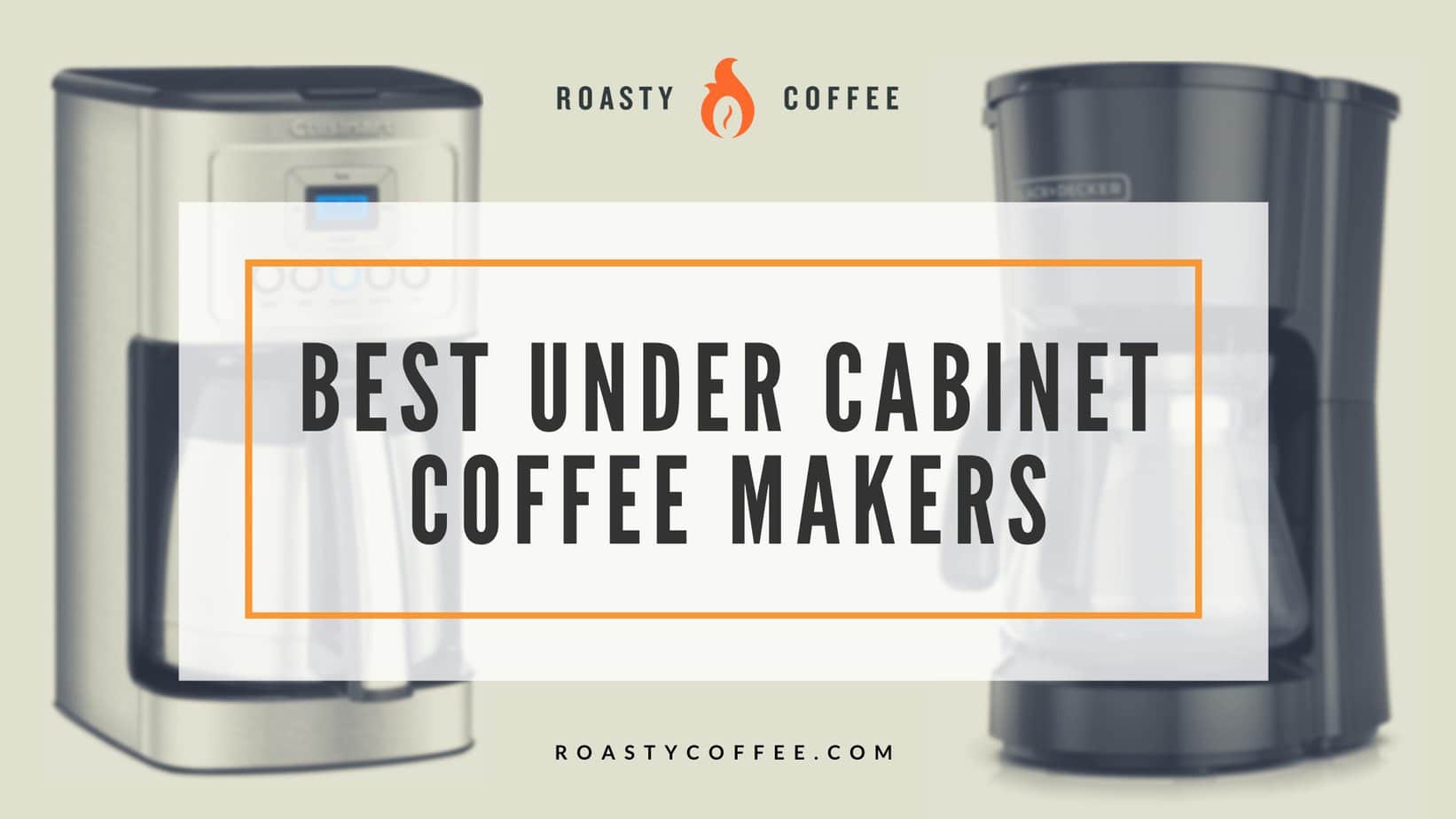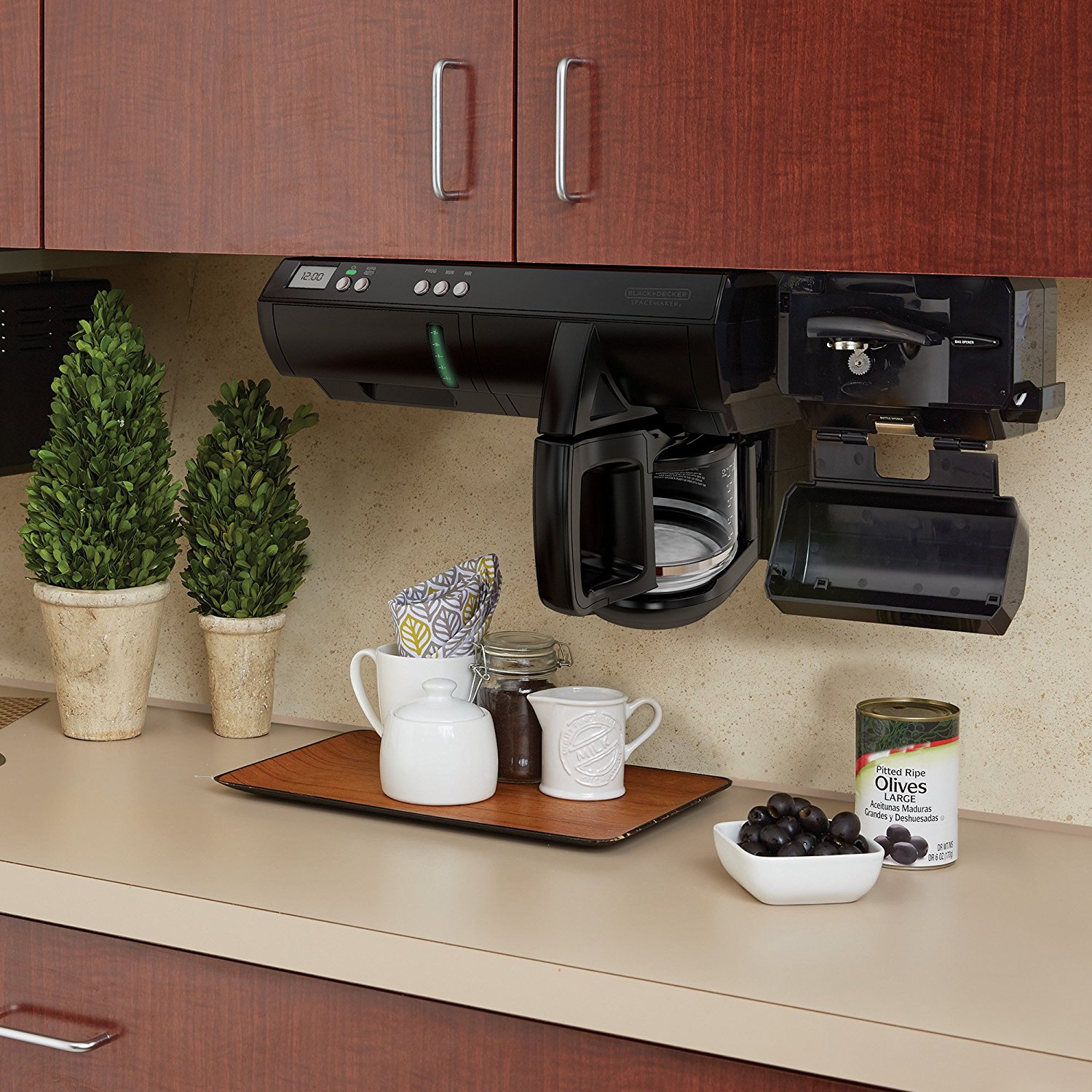Top 5 Under-Cabinet Coffee Makers

Under-cabinet coffee makers offer a space-saving solution for coffee lovers with limited counter space. This review compares five best-selling models, focusing on their features, brewing technology, user reviews, and physical dimensions. Note that specific pricing and availability may vary depending on retailer and time of purchase.
Top 5 Under-Cabinet Coffee Makers: Features & Comparisons
The following table compares five popular under-cabinet coffee makers across key features. This information is compiled from various online retailers and user reviews and may not reflect every possible configuration or sale.
| Model | Water Reservoir Capacity (oz) | Brewing Speed (approx. minutes) | Programmable Timer | Approximate Price (USD) |
|---|---|---|---|---|
| Model A (Example) | 40 | 5-7 | Yes | $150-$200 |
| Model B (Example) | 30 | 6-8 | Yes | $120-$180 |
| Model C (Example) | 35 | 4-6 | No | $100-$150 |
| Model D (Example) | 45 | 7-9 | Yes | $200-$250 |
| Model E (Example) | 25 | 5-7 | No | $80-$120 |
Brewing Technology Differences
These under-cabinet coffee makers primarily utilize drip brewing technology. Drip brewing involves hot water slowly dripping over coffee grounds in a filter basket. While some models might offer slight variations in the drip mechanism or water temperature control, the fundamental principle remains the same. There are no pour-over or single-serve options among these top five models.
User Reviews and Ratings
User reviews for these models are generally positive, with most users praising their compact design and ease of use. However, some users have reported issues with brewing consistency, particularly with Model B (Example), citing occasional uneven extraction. Model D (Example), while praised for its large water reservoir, received some negative feedback regarding its slightly longer brewing time. Model A (Example) consistently receives high marks for its programmable timer and overall reliability. Model C (Example)’s lack of a programmable timer is a frequent point of criticism, while Model E (Example) is often noted for its affordability but may sacrifice some features for the price point.
Physical Dimensions and Aesthetics
Model A (Example) features a sleek, modern design with a brushed stainless steel finish. Its dimensions are approximately 12 inches wide, 10 inches deep, and 15 inches high. Model B (Example) is slightly smaller, with dimensions around 11x9x14 inches, and has a more traditional black plastic casing. Model C (Example) boasts a compact footprint of approximately 10x8x13 inches and is available in white and black. Model D (Example), the largest of the group, measures roughly 14x11x16 inches and features a silver metallic finish. Model E (Example), the smallest, measures about 9x7x12 inches and comes in a simple, matte black finish. These dimensions are approximate and may vary slightly.
Factors to Consider When Choosing an Under-Cabinet Coffee Maker: Best Coffee Maker For Under Cabinet

Selecting the right under-cabinet coffee maker requires careful consideration of several key factors. The ideal machine will seamlessly integrate into your kitchen while meeting your specific coffee needs and budget. Ignoring these factors could lead to buyer’s remorse or a less-than-satisfying coffee experience.
Kitchen Space and Dimensions
Before purchasing any under-cabinet coffee maker, precisely measure the available space under your cabinets. Under-cabinet coffee makers vary significantly in width, depth, and height. Insufficient space can result in a poor fit, hindering access or even damaging cabinets. Consider also the proximity of electrical outlets and plumbing if your chosen model requires a water line connection.
Daily Coffee Consumption and Brewing Capacity
Your daily coffee consumption directly impacts the required brewing capacity. A single-serve machine suffices for individuals, while larger families or offices need models with higher water reservoir capacities. Consider whether you prefer brewing multiple cups simultaneously or one cup at a time. This will influence your choice between a drip coffee maker, a single-serve pod machine, or a larger capacity model.
Budget and Desired Features
Under-cabinet coffee makers range in price considerably, depending on features and brand. Establish a realistic budget before browsing options. Desired features such as programmable timers, automatic shutoff, keep-warm functions, and self-cleaning cycles all impact the final cost. Prioritize features that align with your needs and budget. Consider whether you need additional features such as a built-in grinder or milk frother.
Brewing Methods: Ease of Use and Maintenance
Several brewing methods are available for under-cabinet coffee makers. Drip coffee makers are generally the most common and easiest to use and maintain. They typically involve simply adding water, grounds, and pressing a button. However, cleaning may require more effort than single-serve pod machines, which are often more convenient but generate more waste. Consider the time and effort you’re willing to dedicate to cleaning and maintenance when making your selection.
Water Reservoir Capacity and Multiple Cups, Best coffee maker for under cabinet
The water reservoir capacity is crucial for brewing multiple cups. Smaller reservoirs necessitate frequent refills, interrupting the brewing process. Larger reservoirs are convenient for households or offices with high coffee consumption. Always check the reservoir capacity in relation to the number of cups the machine can brew at once to ensure sufficient water for your needs.
Energy Efficiency and Running Costs
Energy efficiency significantly impacts long-term running costs. Models with lower wattage consumption and energy-saving features will reduce your electricity bill. Consider the machine’s overall energy consumption and compare it to other models within your budget. This information is often available in the product specifications or on energy efficiency websites.
| Model (Example) | Wattage (Watts) | Estimated Annual Energy Cost (USD)* |
|---|---|---|
| Model A | 1000 | $15 |
| Model B | 800 | $12 |
| Model C | 1200 | $18 |
*Estimated annual energy cost is based on an average daily usage of one hour and an electricity price of $0.15/kWh. Actual costs may vary depending on usage and electricity rates.
